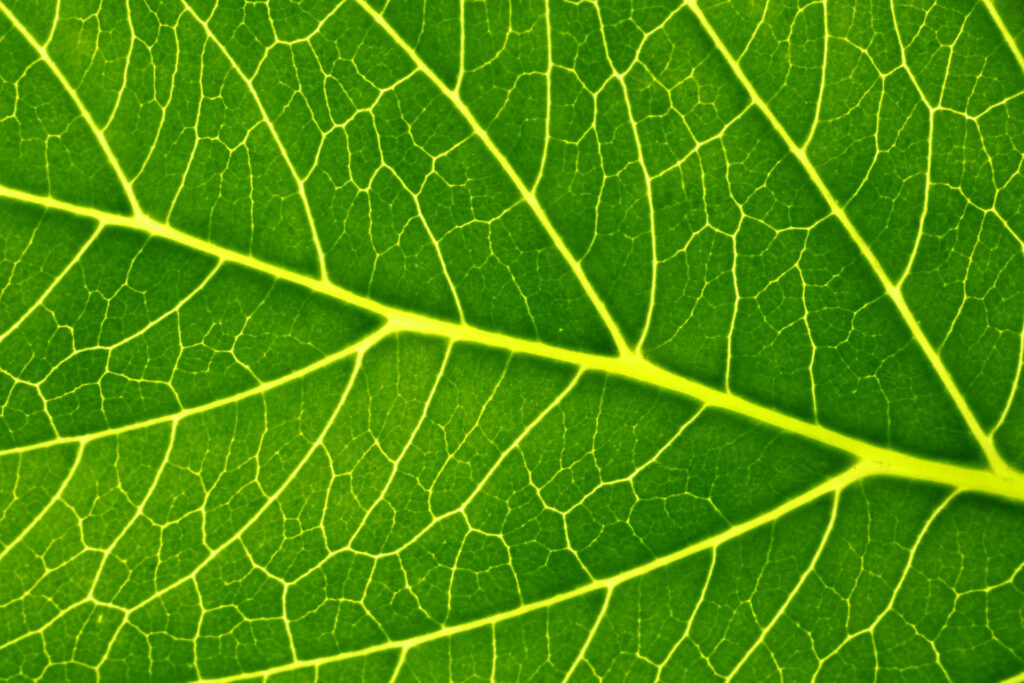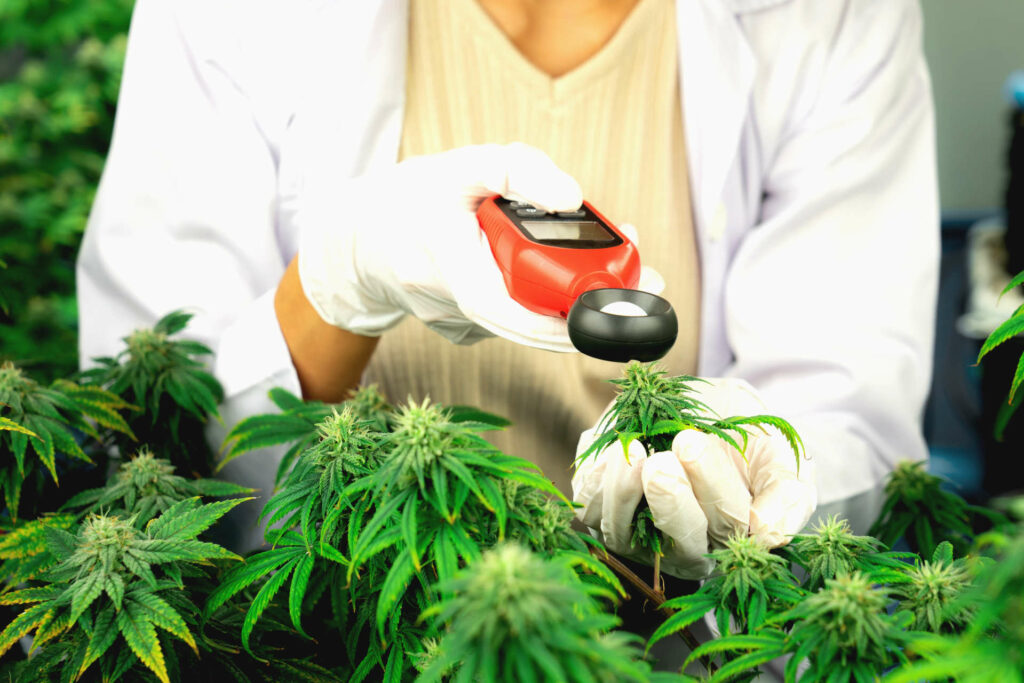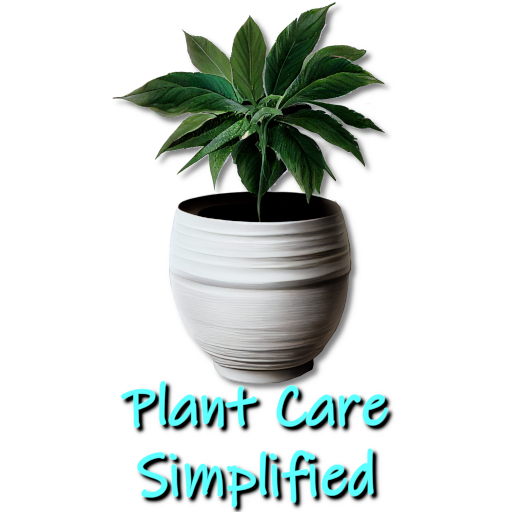What Is the Relationship Between Light and Plant Growth?
Kim is passionate about helping people create beautiful, healthy indoor spaces that are filled with plants. Kim believes that plants make us happier, healthier human...
- Light is essential for plant growth and development as it serves as the main energy source for photosynthesis, the process through which plants produce their own food.
- Photosynthesis occurs in the chloroplasts of plant cells and involves the absorption of light energy by chlorophyll, which converts carbon dioxide and water into glucose and oxygen.
- The intensity and duration of light, the availability of carbon dioxide and water, and the temperature can affect the photosynthetic rate.
- Light plays a crucial role in various plant processes such as the opening and closing of stomata, transpiration, and water uptake.
- Different wavelengths of light can affect plant development, with blue and red light being important for photosynthesis and plant growth.
Light is a vital factor for plant growth and development. It serves as the primary source of plant energy, providing the fuel needed for photosynthesis, the process through which plants produce food. In addition to its role in photosynthesis, light also plays a crucial role in regulating various plant processes, such as water uptake and transpiration.
In this article, we will explore the relationship between light and plant growth, examining how light affects plant processes and plant production, the importance of light for photosynthesis, and how intensity, as much as amount, can affect plant processes. We will also delve into the effect of different wavelengths of light on plant development. Understanding the role of light in plant growth can help us better understand how to care for and cultivate healthy plants.
The Role of Light in Photosynthesis

Photosynthesis is the process through which plants convert light energy into chemical energy in the form of glucose, which serves as their primary energy source. This process occurs in the chloroplasts of plant cells and involves the absorption of light energy by chlorophyll pigment molecules.
During the photosynthesis process, chlorophyll absorbs light energy, which is then used to transform/change carbon dioxide and water into glucose and oxygen. The oxygen is released into the atmosphere as a byproduct of the reaction, while the plant uses glucose as an energy source.
Photosynthesis is a complex process that is essential for the survival of plants, as it allows them to produce their food and energy. It is also necessary for the planet's overall health, as oxygen produced by plants during photosynthesis is necessary for animal life and the overall health of the Earth's atmosphere.
Photosynthetic rate (or the rate at which photosynthesis occurs), is affected by various factors, including the intensity and duration of light, the availability of carbon dioxide and water, and the temperature. Plants need access to sufficient light, water, and carbon dioxide for photosynthesis to occur efficiently. It is also essential for the temperature to be within a specific range, as extreme temperatures can inhibit the process of photosynthesis.
Leaf Anatomy
Leaf anatomy, including the structure and function of different leaf parts, can influence how well plants absorb light and perform photosynthesis. For example, the thickness and pigmentation of the leaf surface can affect how much light is absorbed and how effectively it is used for photosynthesis. The presence of specialized pigment molecules such as chlorophyll, which is involved in the absorption of light energy during photosynthesis, can also play a role in light absorption and plant growth.
The Impact of Light on Plant Processes
Light plays a crucial role in various plant processes, including the opening and closing of stomata, which are tiny pores on the surface of plants that allow for the exchange of gases such as carbon dioxide and oxygen. In addition, light also affects transpiration and water uptake in plants. Transpiration is the process through which plants lose water vapor through their leaves.
Light intensity and duration can influence transpiration rates, with higher levels of light typically leading to higher transpiration rates. Light can also affect the absorption of water by plants, as it activates the process of photosynthesis, which produces energy that drives the uptake of water and nutrients from the soil.
Light and Transpiration
Transpiration is the process through which plants lose water vapor through their leaves. It is an essential process for plants as it helps to regulate their overall water balance and maintain a healthy internal environment.
Light intensity and duration can influence transpiration rates, with higher levels of light typically leading to higher transpiration rates as light activates the process of photosynthesis, which produces energy that drives the uptake of water and nutrients from the soil. As the plant absorbs more water and nutrients, it must also release excess water vapor through transpiration to maintain a healthy water balance.
Light and The Operation of Stomata
The opening and closing of stomata, which are tiny pores on the surface of plants that allow for the exchange of gases such as carbon dioxide and oxygen, are also influenced by light. When light strikes the surface of a leaf, it activates photoreceptors in specialized cells called guard cells, causing them to swell and open the stomata. In the absence of light, the guard cells relax, and the stomata close. This process, known as stomatal photorespiration, allows plants to regulate gas exchange and water loss.
Stomatal regulation is vital for plants, as it allows them to control their gas exchange and water loss in response to environmental conditions. For example, plants may close their stomata in high humidity to reduce water loss through transpiration. In times of low humidity, they may open their stomata to increase gas exchange and absorb more water from the soil.
How Light Affects the Ability of A Plant to Processes Water
As we have seen, during the photosynthesis process, water is also a critical reactant. When a plant absorbs light energy, it splits water molecules into hydrogen and oxygen atoms. The hydrogen atoms are used to produce glucose, a type of sugar that provides fuel for the plant. The oxygen atoms are released into the air as a byproduct of this process.
Changes in The Amount and Intensity of Light

Changes in the amount of light and light intensity can affect water processing in several ways. For example:
- Photosynthetic rate will change if light conditions, water, and carbon dioxide availability, and temperature change. If a plant is not receiving enough light, it may not be able to photosynthesize efficiently. Being unable to photosynthesize efficiently can reduce the photosynthetic rate at which water is used, as the plant will not be producing as much glucose and will not be releasing as much oxygen into the air.
- If a plant receives too much light, it may become stressed and unable to transpire (release moisture through its leaves) as efficiently. This can lead to dehydration and ultimately lead to the death of the plant if not addressed.
- If the intensity of the light a plant receives is too high, it can also cause the plant to become sunburned. Sunburned plants will have yellow, brown, or crispy leaves, which may eventually fall off.
Different Light Wavelengths and Plant Development
Different wavelengths of light can affect plant development in various ways. Blue light, which has a wavelength of around 400 nanometers, is vital for developing solid stems and promoting vegetative growth. This is because blue light activates photoreceptors in plants called phytochromes, which regulate plant growth and development. Phytochromes are sensitive to blue light and help to control the elongation of stem cells, leading to the development of strong stems and overall plant growth.
Red light, with a wavelength of around 700 nanometers, promotes flowering and fruiting in plants. Red light activates another type of photoreceptor called a flavin, which is involved in the regulation of flowering and the production of fruit. Flavins are sensitive to red light and help handle the production of hormones necessary for developing flowers and fruit.
In addition to blue and red light, other wavelengths, such as green and far-red light, also affect plant development. Green light, which has a wavelength of around 500 nanometers, is primarily reflected by the leaves of plants, making it less effective at promoting growth. Far-red light, with a wavelength of approximately 730 nanometers, can inhibit the effects of red light and is involved in regulating plant growth and development.
RB-Grown Plants
R- and B-grown plants refer to plants that are grown with different ratios of red to blue light. As we have discussed, red light has a wavelength of around 700 nanometers and promotes flowering and fruiting in plants. In contrast, blue light, with a wavelength of approximately 400 nanometers, promotes a plants vegetative growth and the development of strong stems.
R-grown plants are plants that are grown under a high ratio of red to blue light (i.e higher proportion of red light). These types of plants tend to have a more compact growth habit and are more prone to flowering and fruiting. Plants grown like this tend to be used for ornamental purposes, as they generally produce more flowers and fruit.
B-grown plants are plants where the light wavelength ratio is reversed (i.e will have a higher level of blue than red light). The plants grown under these lighting conditions have greater open growth and are much more prone to producing vegetative growth.
This type of lighting configuration is more likely to be seen in horticultural production as they will develop/produce more leaves and stems.
Lighting Conditions
Light conditions, including light intensity, duration, and spectrum, can majorly impact plant growth and development. For example, plants exposed to low levels of light may struggle to produce enough energy for photosynthesis and may experience slower growth. On the other hand, plants exposed to high light levels may be more prone to stress and may need to employ mechanisms such as stomatal regulation to reduce water loss through transpiration.
Fluorescent Light
Fluorescent light, a type of artificial light that produces a broad spectrum of wavelengths, is often used to grow plants indoors. Fluorescent light is relatively energy efficient and can give plants the light they need to thrive/grow. However, it is vital to consider the spectrum of fluorescent light, as different types of fluorescent bulbs may produce different wavelengths of light that can affect plant growth.
White Light
White light, a combination/mixture of wavelengths across the visible spectrum, is another variation on the type of light that can be used to grow plants. Incandescent bulbs are generally used to create white light. These bulbs generate artificial light by heating a filament to a high temperature. Incandescent bulbs are relatively energy inefficient, difficult to buy, not very environmentally friendly, and ultimately may not be the most cost-effective for growing plants.
Monitoring Light Levels

We have discussed how plants are affected by light and touched on the differences between varying plant species concerning their light requirements.
Different species have different requirements regarding the amount and intensity of light, with some overtly preferring different light wavelengths to others. Because of this, it is essential to monitor the amount type, and intensity of the light a plant receives to ensure optimal growing conditions.
Light Meters
Using a light meter can be a valuable way to monitor the strength of light that a plant is receiving. Light meters, also known as lux meters, measure the intensity of light in a specific area. By using a light meter to measure the intensity of light a plant receives, you can determine whether the plant is receiving the appropriate amount of light for its specific needs.
There are a few different types of light meters available, and each type is designed to measure various aspects of light intensity. Some light meters are designed to measure light intensity over a broad range of wavelengths. In contrast, others are more specialized and designed to measure light intensity in a specific part of the spectrum.
In general, it is a good idea to use a light meter to monitor the strength of light that a plant is receiving if you are concerned about whether the plant is receiving enough light or if you are trying to optimize the light conditions for a specific plant. This can help you ensure that the plant gets the appropriate amount of light for its particular needs and can help you avoid problems such as underlighting or overlighting.
Kim is passionate about helping people create beautiful, healthy indoor spaces that are filled with plants. Kim believes that plants make us happier, healthier human beings, and she loves sharing her knowledge with others so they can experience the joys of plant care for themselves. <a href="https://plantcaresimplified.com/kim-marson/">Read more</a>
More Posts